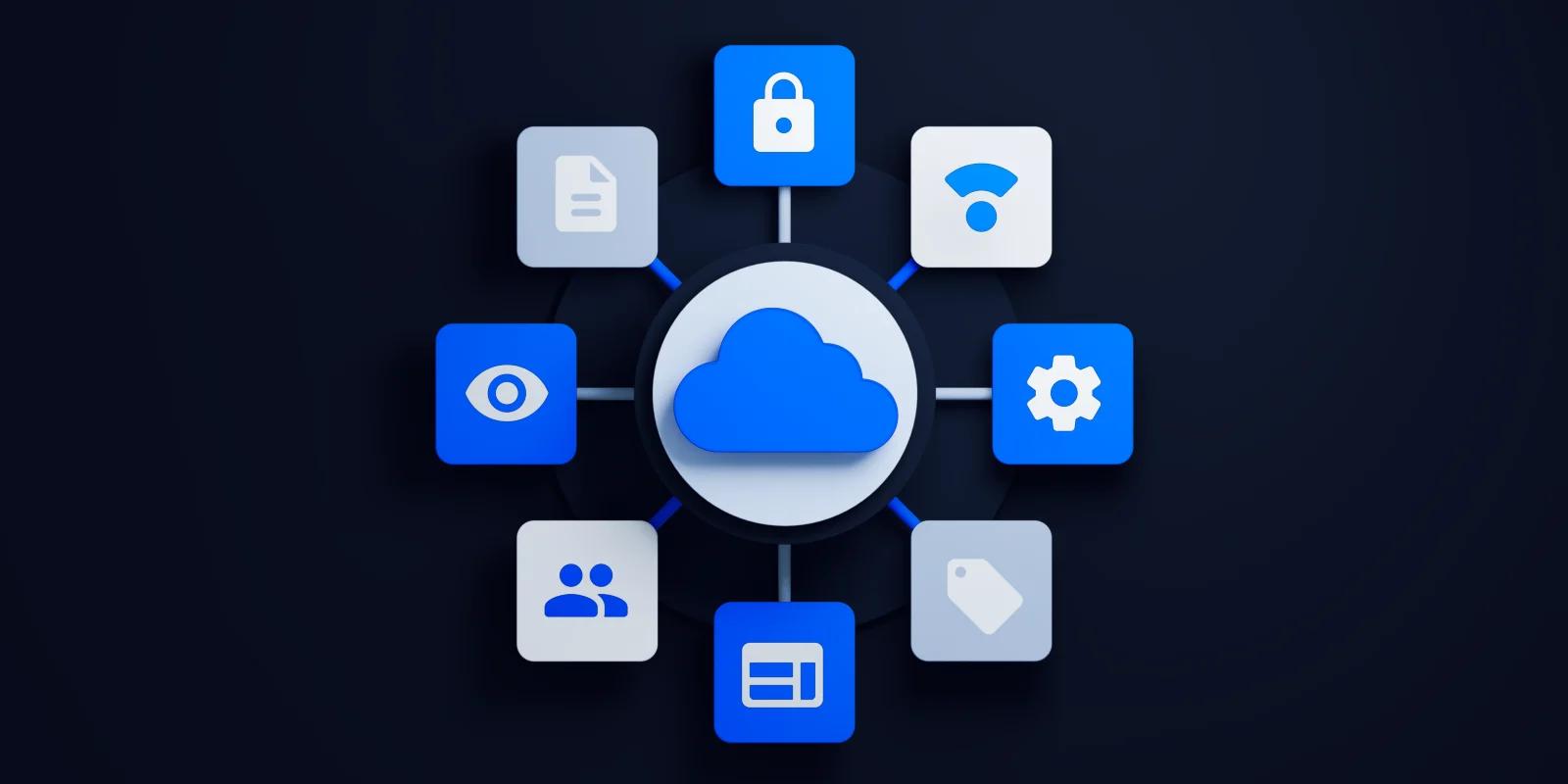The cloud-first approach entails designing the CMS with the cloud in mind from the start. The cloud-first headless CMS brings together the benefits of both headless and the cloud. In general, a cloud-first headless CMS is much easier and simpler to use, which makes implementation times shorter.
Even with a basic web server configuration, you can handle high traffic levels. Also, because the CMS is delivered as a cloud service, you save a lot of time when deploying and setting it up.
But this raises the question—does a headless CMS mean it's cloud-based? This article will explain a headless CMS, how they can be cloud-based, and signs that you should switch to a cloud-based solution.
Explaining a Headless CMS in 1 Minute
A headless CMS is a type of content management system that keeps the backend and frontend management of digital content separate. One end is responsible for making and storing things, while the other end is responsible for delivering things through an interface.
A headless CMS has an application programming interface (API) that lets content be published from anywhere and on more than one channel. Frontend developers can create as many heads as they like using an API. Separating the frontend presentation layer shortens the time it takes to get a product on the market. It also makes the user experience better and more consistent.
In essence, a headless CMS helps keep content future-proof so that users may interact with it regardless of what new technology is ahead. An example of a popular headless CMS platform is Contentful—a headless platform designed to provide users with an intuitive experience to help businesses customize their digital presence.
What does cloud-first mean in SaaS?
The cloud-first headless CMS in the SaaS model is going to revolutionize content production and delivery for a multi-channel, multi-device generation.
The term "cloud-first" refers to using cloud solutions to replace on-premises technologies that are often more expensive and inefficient. The cloud has evolved into a powerful resource for today's businesses.
Businesses can benefit from skillfully managed IT resources while avoiding the high expenses of initial equipment purchases and continuous upkeep. A cloud-first strategy makes it easier for businesses to downsize or even eliminate in-house IT departments.
The headless CMS strategy works with on-premise CMSs, but it offers the greatest advantage when used in the Software as a Service (SaaS) model. Thanks to the headless approach, CMS companies are now able to offer content management as a true multi-tenant SaaS service.
The Software-as-a-Service market, driven by cloud technology, is making waves for businesses across all industries. Many businesses and software developers see Software as a Service (SaaS) as the new direction for productivity tools in today's cloud-driven environment.
In addition to leveraging various types of cloud environments—such as public, shared platforms, and dedicated, private cloud solutions—SaaS enables businesses to change the way they license and access software systems.
Instead of hosting these vital applications on-premises, SaaS provides a new software delivery model in which enterprises pay a subscription and access the software deployed in centrally hosted environments owned by service providers.
Are all headless CMS platforms cloud-first?
A Headless CMS is a content management framework that lets you build content for custom apps via an API. The term "headless" refers to having no frontend. It stores and distributes content via a backend system and an API.
Although headless CMSs are easier to use, more flexible, adaptable, and cost-effective, you’ll find the real advantages come with the “cloud-first” approach.
"Cloud-first" refers to the CMS that was designed from the beginning for the cloud. A cloud-first headless CMS combines the advantages of both headless and cloud environments.
Since all headless CMS platforms are not cloud-first, many businesses are transitioning from classic to cloud-first headless solutions. By combining the benefits of a headless architecture with a cloud CMS, businesses can enjoy several advantages, including scalability and freedom from maintenance.
Opting for a cloud-first headless CMS saves organizations the effort of hosting their CMS on-premises.
The cloud-first headless CMS method enables you to focus on your website or mobile app. At the same time, the CMS provider handles the infrastructure, databases, CDN, installation, upgrades, hotfixes, backup, availability, performance, and security.
You still have work to do, but your CMS code is safe. It is easy to safeguard your code, and the cloud CMS handles most of the work so that you can handle large amounts of traffic with a modest web server.
What is a cloud-first headless CMS?

cloud-based-headless-cms
The term "cloud-first" refers to a CMS that is built with a multitenant cloud paradigm at its core. The cloud-first headless CMS brings together the best of headless with the advantages of the cloud. It offers clients excellent availability, scalability, complete security, upgrade, and hotfix management.
The cloud-based CMS may be set up in minutes and requires no ongoing maintenance. It was created to take full advantage of the cloud's power and scalability. Its content model and API were designed with multichannel scenarios in mind from the start. These are all minor factors that add up to a significant increase in your agility and productivity.
How is a cloud-first headless CMS different from a headless CMS?
The headless CMS was not designed to be a true cloud service. In headless CMS, every single installation is managed manually, and you are just not able to scale such a service to thousands of customers without hiring an army of IT experts. When hosting a classic headless CMS in the cloud, you have to keep a few things in mind.
• Setting up a web server
• Setting up the CMS
• Setting up a web server
Fortunately, there is a solution that combines the advantages of SaaS with unbounded flexibility for your presentation layer. It's a cloud-first CMS leveraging the headless CMS architecture, where you can utilize an API to display content on your website, mobile app, or any other channel.
In today's multi-channel environment, the cloud-first headless CMS is the best approach to creating websites and managing content. In this situation, the cloud-first headless CMS is designed with the cloud in mind from the beginning--thus it is termed "cloud-first."
The vendor runs only one standardized environment as a genuine multi-tenant SaaS service, which means that all customers use the same version of the CMS.
When to Deploy a Cloud-first Headless CMS
The technology landscape has changed vastly over recent years. The world needs a new type of CMS that will address the needs of new tech stacks, devices, and UI requirements.
A cloud-first headless CMS fits into the new world. It is the next generation in content management for brands that want to stay ahead of the curve by engaging customers across the growing number of channels. Cloud headless CMS can be considered for deployment in the following scenarios:
Omnichannel Content Distribution
A cloud-first headless CMS is used as a central content hub. It uses APIs to make content available across multiple channels at the same time, allowing you to provide a consistent omnichannel experience to your customers. You won't have to change your CMS to deliver content to newly invented IoT devices.
Simpler Content Repurposing
Content duplication is no longer an issue with a headless cloud CMS. Rather than creating multiple versions of content in various locations, you create only one version and store it centrally. This allows you to repurpose content more effectively, saving time and resources for your team.
Architectural Flexibility
The use of APIs to make services available to other systems in the tech stack is an important aspect of the architecture of a cloud-first headless CMS. The headless architecture allows you to connect to new frontends, like Gatsby, built on emerging technologies and integrate with backend systems.
Improved Scalability
Organizations should not be restricted by their data center's or CMS vendor's compute or data storage capacity. A modern CMS hosted in the cloud scales better than a legacy platform on-premises, allowing for more business growth flexibility.
High Availability
Your data is stored across data centers in multiple geographical zones when you choose an enterprise CMS vendor to host your headless CMS in the cloud, increasing the availability of your CMS.
Low Initial Investment
Setting up a cloud-first headless CMS is less expensive than setting up an on-premises platform. You don’t have to concern yourself with purchasing hardware such as servers and networking equipment required for an on-premises deployment. Instead, you typically pay a subscription to use the cloud CMS service.
Parting Thoughts
A cloud-first headless CMS represents the future of content management. A headless cloud CMS combines the agility of a cloud-based system with the unlimited flexibility of an API-first architecture.
It is often simple and easy to use, resulting in quicker implementation times. Because the CMS is delivered as a cloud service, you save time on implementation and configuration.
Learn more about headless CMS implementation in this detailed article that walks you through the entire process.




